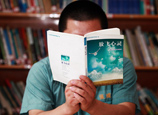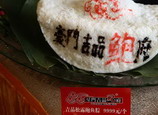
If California Governor Jerry Brown were to meet President Xi Jinping and US President Barack Obama during their two-day meeting this week in Southern California, one thing the Golden State governor could proudly mention is his recent fruitful visit to China.
Brown and several California business leaders went on a week-long trade mission to China in April in a bid to attract investment from the world's second-largest economy.
The trip produced several concrete deals, including a $1.5 billion investment in the Brooklyn Basin waterfront development project in Oakland, California, and a $20 million contract for a zero-liquid-waste discharge project in China.
The 26-hectare Brooklyn Basin project will feature 3,100 homes, retail space, parks and a marina, and is seen as a boon for the Northern California city's already hot real estate market.
The project is being carried out by Beijing-based Zarsion Holdings Group and Oakland, California-based Signature Development Group.
Groundbreaking on the project, which has already received all the necessary approvals, is expected to begin in the first quarter of 2014.
"The project is moving forward according to plan and the partnership has been formed," said Michael Ghielmetti, president of Signature, who added that his company had high hopes for its first deal with a Chinese partner.
"Our expectations for the project are to create a first-class waterfront neighborhood in Oakland," he said.
Climate policy and energy investment were also on the agenda during Brown's China visit.
Another contract announced was for a zero-liquid-waste discharge project, which was signed by Shanghai-based McWong Environmental and Energy Group, a subsidiary of California-based engineering company McWong International, and Inner Mongolia ChinaCoal Mengda New Energy and Chemical Industry, a subsidiary of China National Coal Group.
Margaret Wong, president of McWong and a member of Brown's delegation, said her company had been active in China's environmental sector for more than a decade and the new project will be a welcomed addition.
"We have many projects of this kind," Wong said. "Our expertise is in providing wastewater treatment system solutions, from design and engineering to equipment and technology. This is just one of several recent projects."
The new project stands out because its technology — zero-liquid-waste discharge — is new to China and should have wide market potential, according to Wong. The technology involves treatment systems for the total elimination of wastewater effluent.
"There are only two or three companies worldwide that can implement this kind of technology," Wong said, "so it is important that we showcase it properly and make it a success".
Wong added that zero-liquid-waste discharge could be applied to many projects across China.
"We have a few more projects in the pipeline," she said, "and two of them are looking particularly good."
The zero-liquid-waste discharge technology is adopted from California-based New Logic Research, Wong said. "We have three engineers coming from China next month to New Logic to master the details of the technology because it is very complicated," she added.
"This is an EPC project, which means we are engaging the design, the engineering and the procurement," she said, adding that the project was moving forward quickly and expected to be delivered by the first quarter of next year.
Another deal that involves green energy is a $100 million investment from Hongye International Investment Group, which is based in Wuhai in the Inner Mongolia autonomous region, in the Arcadia, California-based company Singpoli Capital.
A spokesman for Singpoli, however, said details of the contract were a trade secret that could not be disclosed.
Other potential cooperative efforts announced during Brown's trip were: a $50 million fund from two Beijing-based companies — Joinn Laboratories and Staidson Beijing Biopharmaceuticals Co Ltd — to build a new pharmaceutical factory in Richmond, California; and a $125 million joint research program between Ningbo University and the Scripps Institution of Oceanography at the University of California, San Diego.
Growing amounts of investment from China is crossing the Pacific to California, home to the US' largest Chinese-American community.
China is the third-largest export destination for the US, and California exported $14 billion in products to China in 2012, more than any other state in the US, according to US Census Bureau.

















 Bodyguard trainees experience 'Hell Week' in Beijing
Bodyguard trainees experience 'Hell Week' in Beijing


![]()
